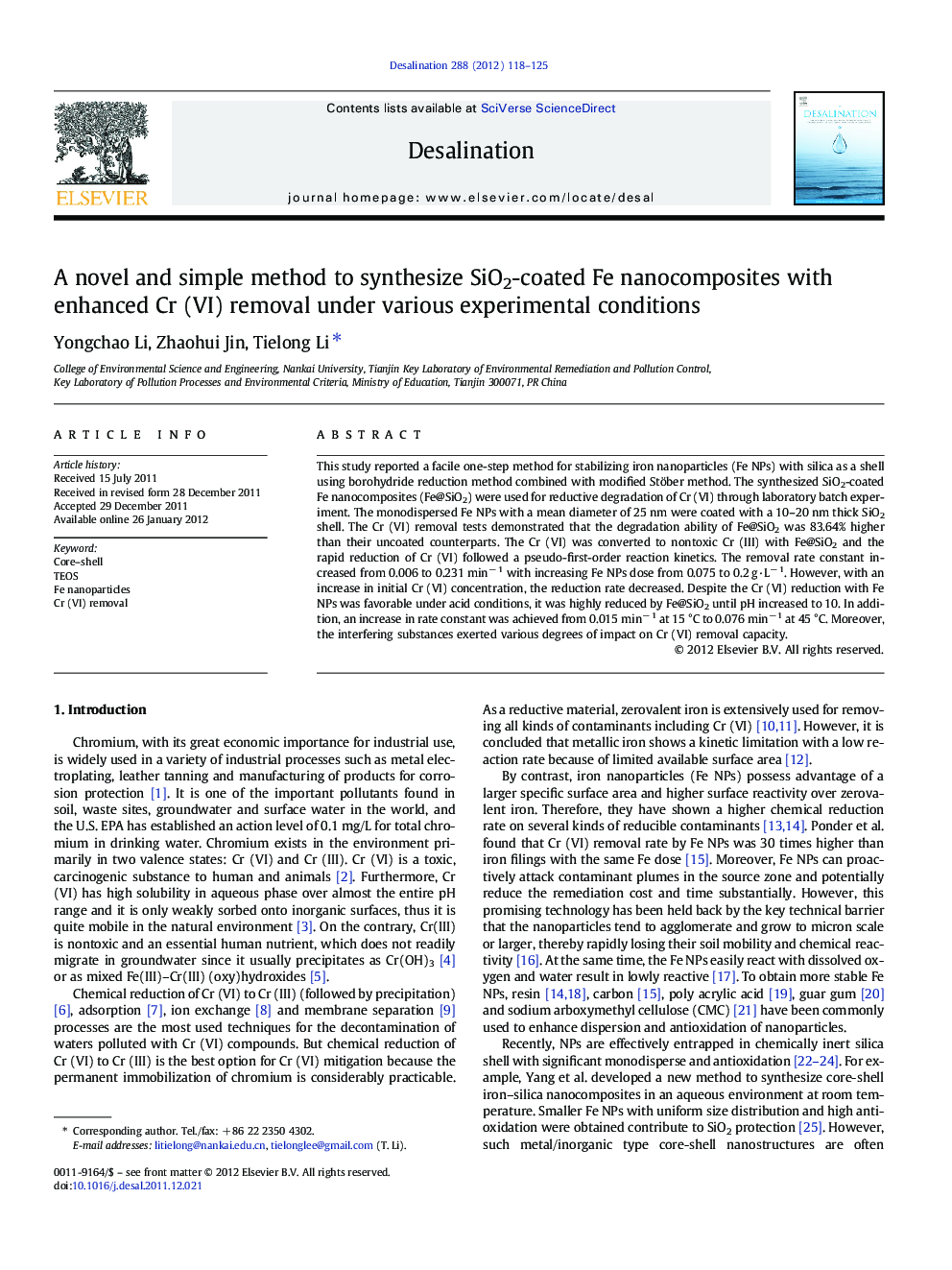| Article ID | Journal | Published Year | Pages | File Type |
|---|---|---|---|---|
| 624556 | Desalination | 2012 | 8 Pages |
This study reported a facile one-step method for stabilizing iron nanoparticles (Fe NPs) with silica as a shell using borohydride reduction method combined with modified Stöber method. The synthesized SiO2-coated Fe nanocomposites (Fe@SiO2) were used for reductive degradation of Cr (VI) through laboratory batch experiment. The monodispersed Fe NPs with a mean diameter of 25 nm were coated with a 10–20 nm thick SiO2 shell. The Cr (VI) removal tests demonstrated that the degradation ability of Fe@SiO2 was 83.64% higher than their uncoated counterparts. The Cr (VI) was converted to nontoxic Cr (III) with Fe@SiO2 and the rapid reduction of Cr (VI) followed a pseudo-first-order reaction kinetics. The removal rate constant increased from 0.006 to 0.231 min− 1 with increasing Fe NPs dose from 0.075 to 0.2 g·L− 1. However, with an increase in initial Cr (VI) concentration, the reduction rate decreased. Despite the Cr (VI) reduction with Fe NPs was favorable under acid conditions, it was highly reduced by Fe@SiO2 until pH increased to 10. In addition, an increase in rate constant was achieved from 0.015 min− 1 at 15 °C to 0.076 min− 1 at 45 °C. Moreover, the interfering substances exerted various degrees of impact on Cr (VI) removal capacity.
► The Fe@SiO2 nanocomposites were prepared through a one-step and friendly method. ► The SiO2 shell suppressed the growth of Fe NPs and prevented them from aggregation. ► The Cr (VI) reduction ability of Fe@SiO2 was much higher than the uncoated Fe NPs. ► The initial Fe NPs dose and other factors had influence on Cr (VI) removal.
